AIU TOPICS
AIU Voices
Faculty Voice: Educational technology, xiaolongbaos, and night markets: My international collaboration visit to National Taiwan Normal University – Asst Prof. Irina Kuznetcova

First contact and travel arrangements
My collaboration with National Taiwan Normal University (NTNU) started with an email introduction by Travis Senzaki, AIU’s International Collaboration Officer, who was kindly assisting me in finding potential partners for my proposed collaborative symposium about education and technology. Dr. Yu-Liang Ting, the chairman of the Department of Technology Application and Human Resource Development at NTNU, expressed interest in working together. Dr. Ting’s department fascinated me because their students study both applied technology (e.g., programming) and psychology as opposed to focusing on only one of the two; in turn, Dr. Ting was interested in bringing in more education-focused expertise. Thus started our productive ongoing collaboration.
After discussing the timeline that could work for both parties, Dr. Ting invited me to participate in a workshop held by his students and to discuss future research collaborations. The visit was set to happen from February 2nd to February 6th, 2023. Prior to the departure, I had to travel to Tokyo to obtain a visitor’s visa (which was delivered within a week by mail) and make arrangements to transfer one of my class days online (the travel dates were planned to minimize interference with teaching and maximize the time at the hosting institution). Teaching duties are extremely important, but it is entirely possible to undertake such international collaboration activities with good planning!
The first unexpected obstacle came from inclement weather on the day of the flight. That Wednesday, all flights between Akita and Tokyo were canceled due to massive snowfall. So I changed my plans on the fly (no pun intended) and rushed outside to get to my car, which I found buried under what looked like a week worth of snow. I never had to shovel snow that fast in my entire life… Somehow I was able to get on the Shinkansen without much delay, to arrive at Tokyo station and to catch the only Narita express train that would get me to the gate in time.
After a while, I found myself dozing off on the plane taking me away from the harsh cold of Akita winter to the humid, subtropical landscapes of Taipei.
Day 1: Settling in & First impressions
Dr Ting’s assistants helped me book a nice cozy hotel right next to the Dognmen subway station, conveniently located just 10 minutes away from the Chiang Kai-shek Memorial Hall, a famous national landmark. From the get go, the hotel receptionist and I somehow ended up speaking in Spanish instead of English… Which later made sense when he told me about his extensive travels. From there on, my experience (as someone who knows one single word in Chinese – xièxiè, or “thank you”) with communication in Taipei was surprisingly positive. When I was not accompanied by my Chinese-speaking hosts, most people tried to communicate in English and were understanding of my communicative blunders.

Dr. Ting and his assistant, Chou Chia Ju (who goes by the name Lulu), invited me for lunch at a famous local restaurant called Din Tai Fung to try thei signature dish xiaolongbao – small steamed buns prepared and served in a bamboo steaming basket. As we were hashing out the plan for my stay, Dr. Ting and Chou Chia Ju made insightful remarks about the food culture and social norms in Taiwan.

The rest of the day was spent exploring various neighborhoods of Taipei, from which I learned at least two things: Taipei is the city of mopeds (I cannot possibly describe their number!) and narrow backstreets.
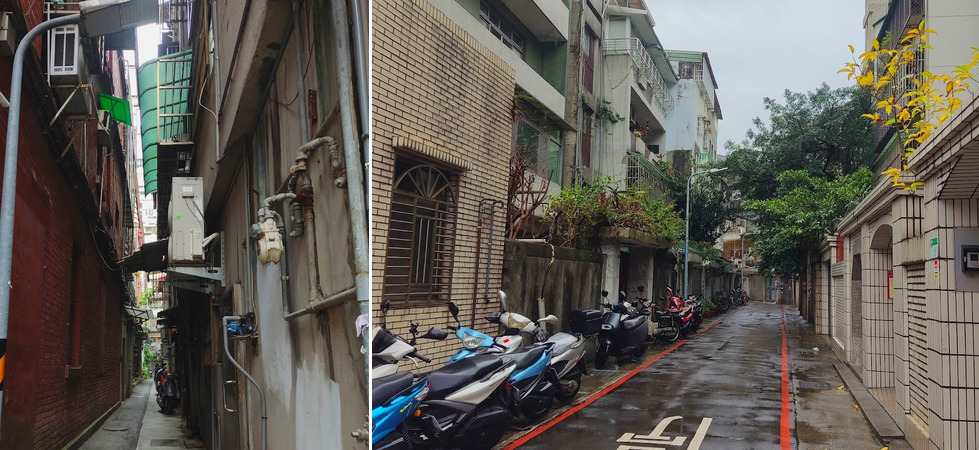
Taipei is also a city of bright colors, or more like a city of stark contrasts between dark gray building finish and bright red temples and colorful lanterns decorating the streets.
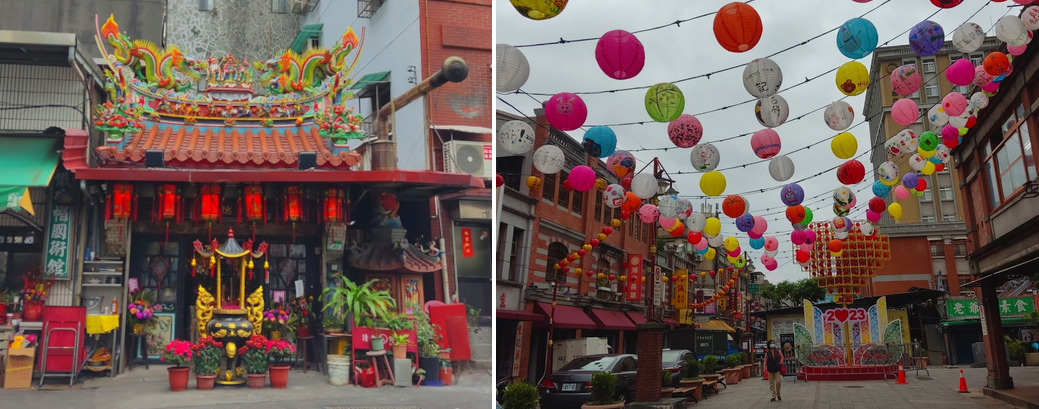
Day 2: The elephant mountain and high school robotics workshop
One of Dr. Ting’s team’s projects has to do with developing students’ programming and scientific reasoning through hands-on robotics workshops. I was invited to partake in one of those workshops in Yongchun Senior High School, located near the famous Elephant mountain on the outskirts of Taipei. I decided to take the long route from my hotel to the school through some of the mountain trails.
The mountain got its name based on the landscape you can see below because one of its slopes looks like an elephant’s trunk. The impressive city line view is just the tip of the iceberg. When I wandered down less traveled paths, I discovered a few old-looking temples and some tranquil, hidden spots that looked as if I were in a Tomb Raider game.

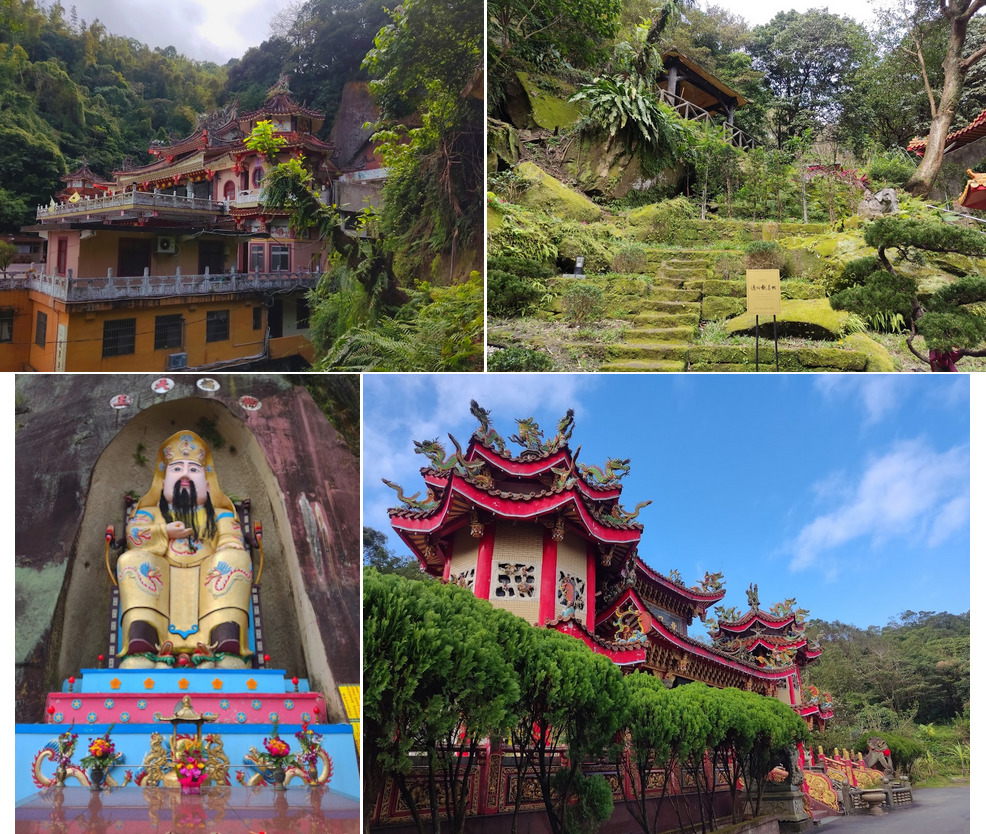
The workshop was quite something to behold! Dr. Ting’s team brought a kit for each student – a combination of wood cutouts and mechanical/electrical parts that were to be assembled into a controllable robotic arm. All assembly instructions were available in the form of a comprehensive video. The team worked with students to discover principles of programming that helped participants animate the arm and make it pick up and manipulate a small cube. The workshop is designed to inspire students to learn science in a hands-on way and develop problem-solving skills. Although I did not understand most of the conversations (conducted in Chinese), the level of organization and the pedagogical underpinnings of this event were truly impressive!
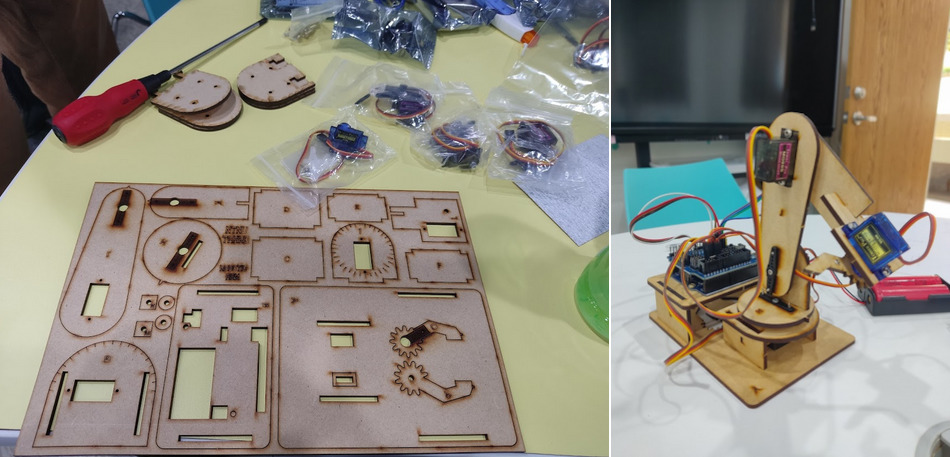
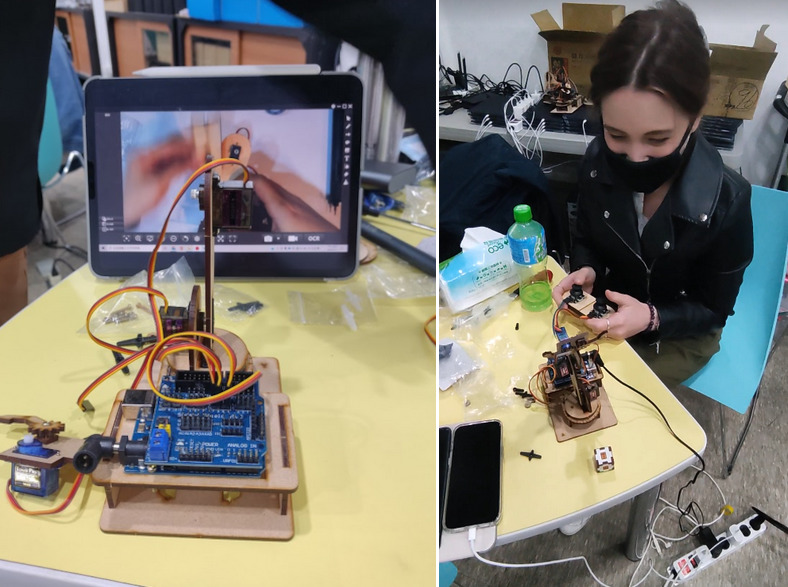
As part of the workshop visit, I had a chance to participate in a guided tour of the school premises. As it turns out, Yongchun Senior High School collaborated with the government of Taiwan to allocate some of its premises for a technology and science playground. A government official worked with the school to design spaces in which the students could learn about Virtual and Augmented Reality, build and test robots (even aquatic ones!), and fly drones (which I did as well. The experience revealed that I’m pretty good at getting the drone through hoops away from me and absolutely terrible at getting it back through the same hoops in the opposite direction…). This government-school collaboration is a vivid example of Taiwan’s strategy to equip more schools with advanced technology in an effort to promote digital literacy among their citizens.
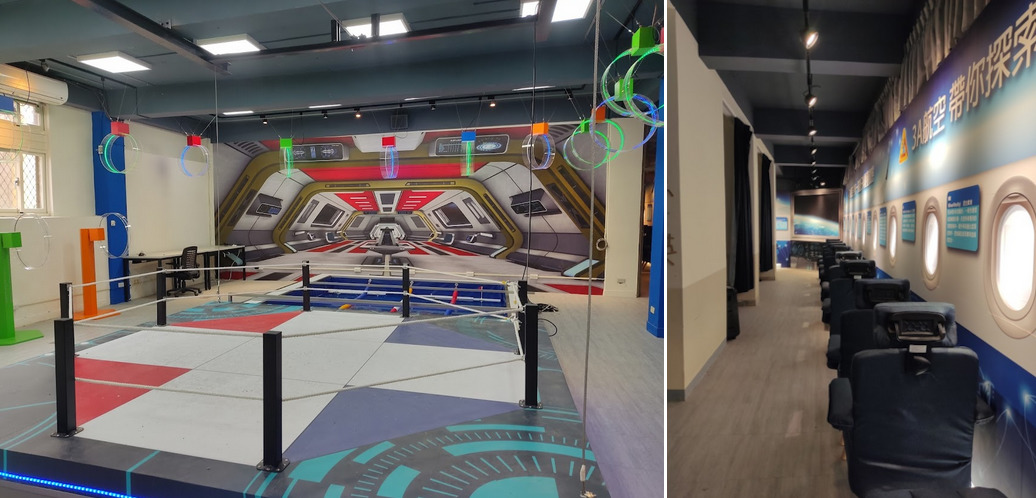
The day concluded with Dr. Ting’s team introducing me to famous stinky tofu (which turned out to be not that stinky and, in fact, quite delicious!) and a slow stroll in one of many Taipei’s street markets.


Day 3: NTNU campus tour and educational technology workshop
The next day, Chou Chia Ju gave me an extensive tour of the NTNU campus. The campus has four major parts: Main campus I (with the Administration building, sports facilities, and several classroom buildings); Main campus II (hosting the Library, Education building, and Science and Technology building, among others); Gongguan campus and Linkou campus. As a huge fan of all things libraries, I was immediately drawn to the NTNU Main library which boasts 8 floors, multiple study and reading rooms, and a neat, modern layout and interior design.
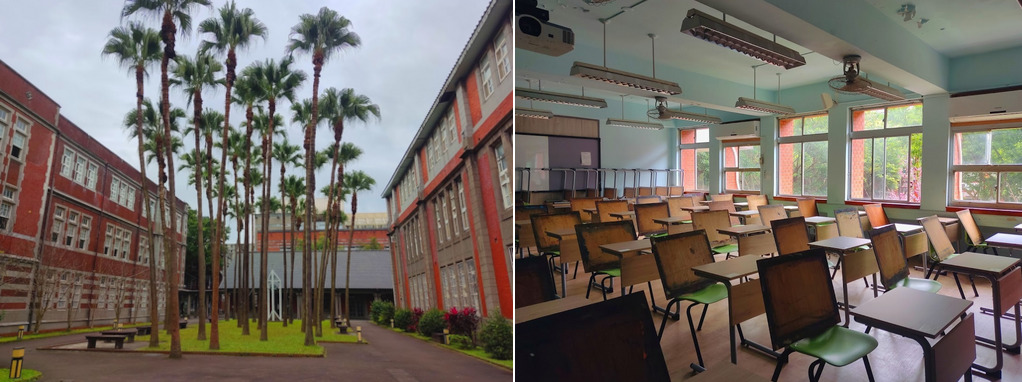

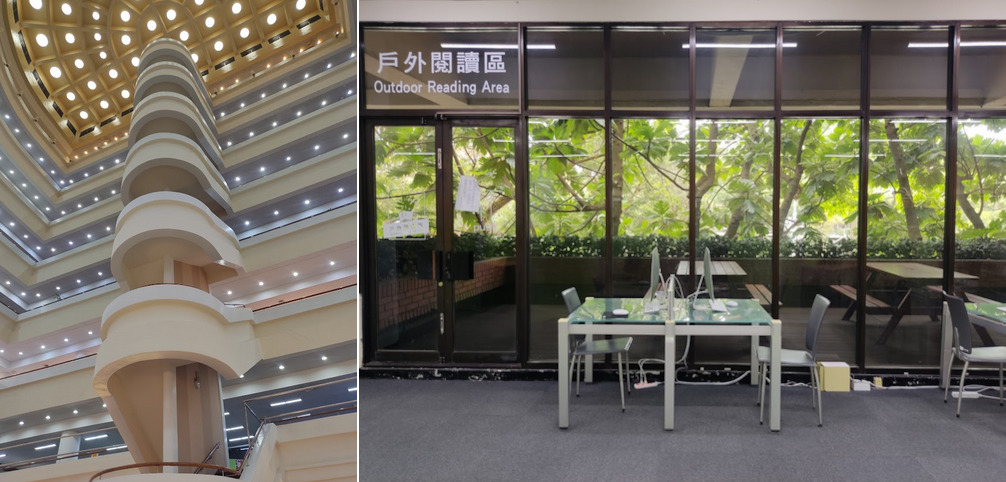

The educational technology workshop scheduled for that day was designed for pre-service teachers (who spoke some English) to learn how to use Unity 3D, a game development platform, to create virtual environments for teaching and learning. My role in the workshop was to present educational technology frameworks that could help participants integrate this technology into their class activities. After a brief lecture about major educational theories, Dr. Ting’s student Yi-Yao Hsu, who was in charge of the technical part of the event, worked with participants to teach them how to create 360-degree virtual worlds in the program. The participants then came up with activities integrating those virtual worlds into their instruction specifically within the frameworks of educational theories we had discussed, and I offered constructive feedback to improve their ideas further.
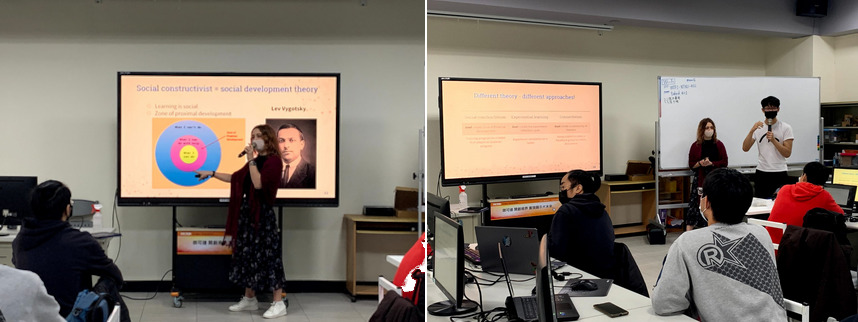

At the end of the day, I finally found my way to the famous Chiang Kai-shek Memorial Hall. The whole complex looked almost surreal in the night lights and was much bigger than it appears in pictures!



Shilin night market lived up to its fame as well! Life was bustling in that strange place crowded with visitors, street food vendors, little booths inviting curious observers to join all kinds of games, and even fashion shops.
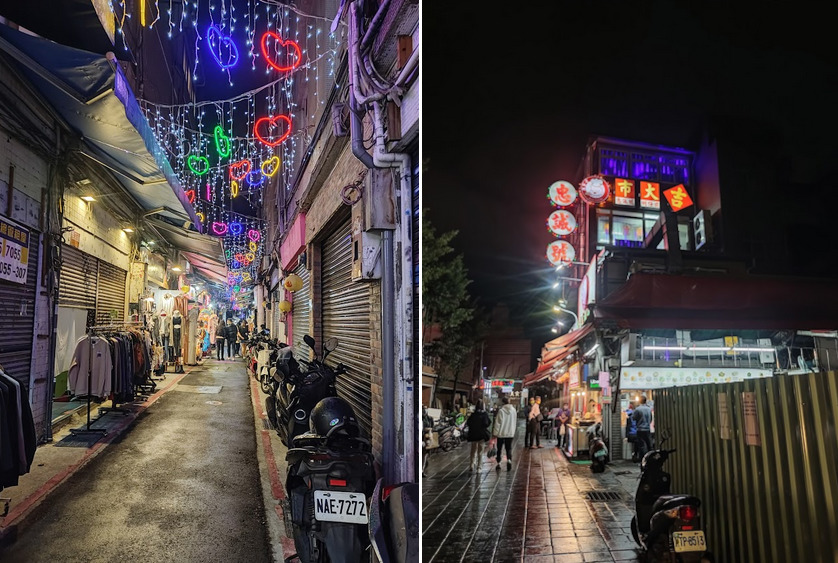
Day 4: Houtong Cat Village
On Sunday, not much was happening in terms of academics, so Dr. Ting’s team took me on a short trip to Houtong Cat Village. The name owes to – you guessed it! – the many cats lazing around in every corner of the place. Unfortunately, the weather did not cooperate that day so most cats were inside. We still got to hang out with a few of them in a nice cozy café at the top of the hill. Well worth a trip!


Day 5: Elementary school workshop & departure
On the last day of my stay, Dr. Ting invited me to observe an educational event held at a local elementary school. Dr. Ting’s students developed a computer game that helps students develop basic problem-solving, digital literacy and communication skills. The game prompted students to search for clues about animals at a famous local zoo and checked their understanding with test questions.
On the same day, Dr. Ting’s students conducted the robotic arm workshop again, this time adapted specifically for elementary school students. Instead of building the arm, the students operated a ready-made version by scanning codes controlling the arm movements in different directions. This workshop aims to develop basic algorithmic thinking skills and English proficiency (some instructions and commands were given in English).

The workshop was followed up by a fun karaoke session with the team, where I discovered that Dr. Ting’s students are not only academically but also musically talented! After karaoke, we said our thanks and goodbyes and promised to continue our collaboration for a long time.
Concluding words
Throughout my stay in Taiwan, Dr. Ting’s team went out of their way to accommodate me, and I am very grateful for their hard work, guidance, and hospitality. I was able to learn not just about how NTNU and Dr. Ting’s department approaches education but also how local schools integrate technology into instruction and what Taiwan’s government does to create a society that is proficient in technology and scientific thinking. Dr. Ting and I continue to collaborate in our research and teaching efforts; I am currently helping him and his students plan a visit to AIU, and he invited me to teach a few online classes in one of his courses.
I believe that experiences like these are essential to our development as teachers at an international institution, and I highly recommend everyone to give it a try!
Irina Kuznetcova
Global Connectivity Program
